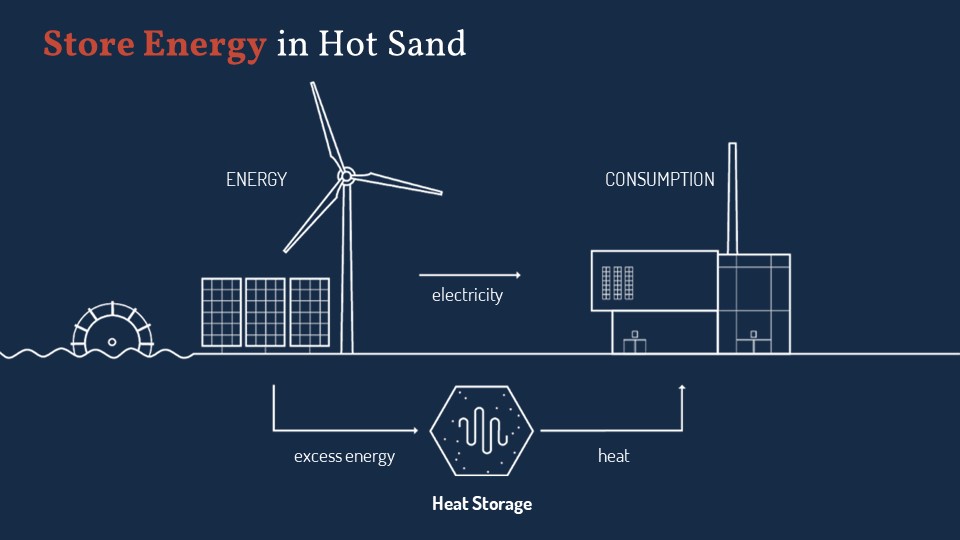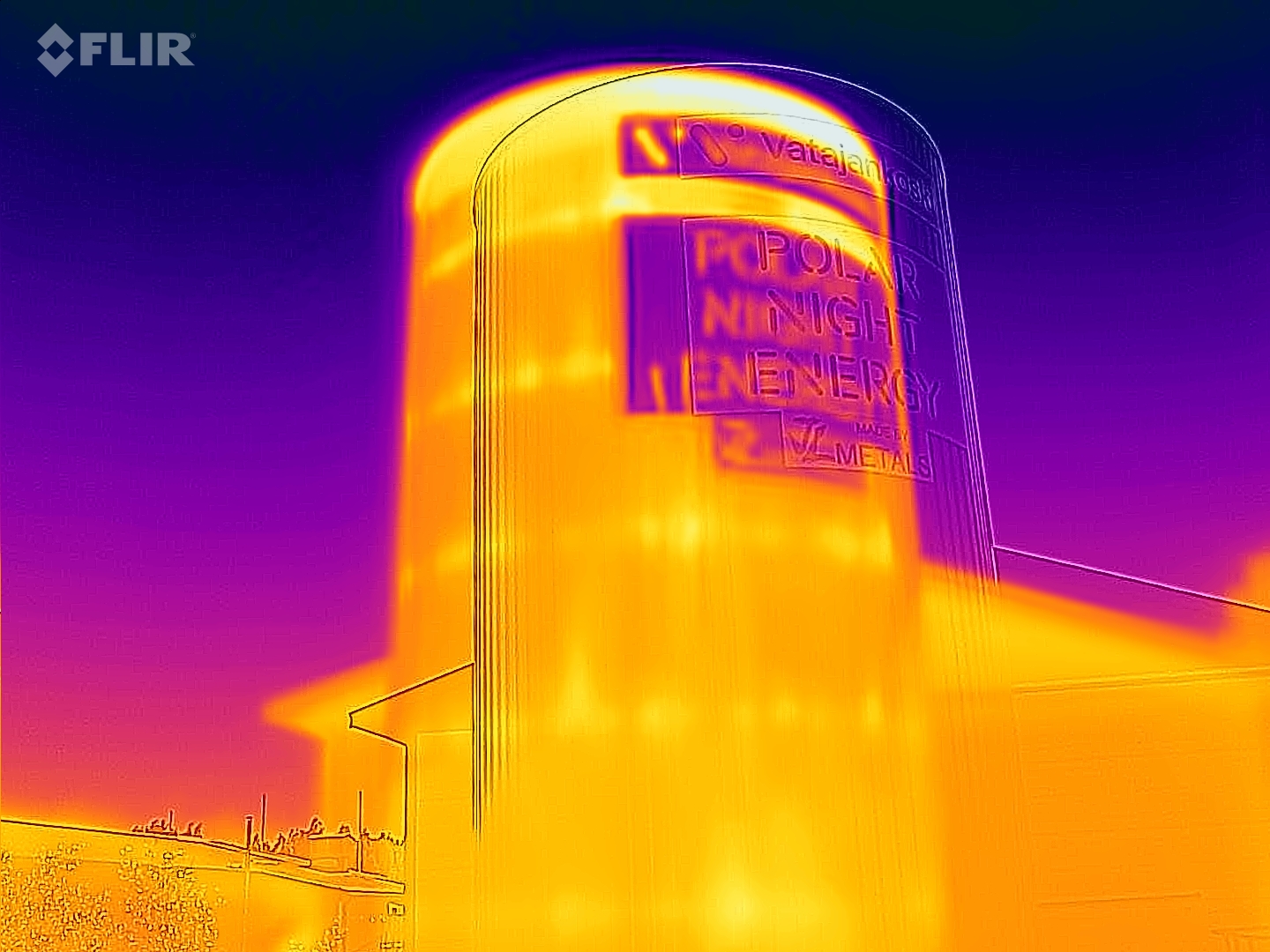
A battery made of sand
A new way of storing renewable energy is providing clean heat through the long Nordic nights.
To provide a year-round, steady power supply from renewable energy during changing seasons and variable weather conditions. That is what the Polar Night Energy team is trying to do in Finland, by using an abundant and cheap source: sand. BBC News has recently published a long report explaining this innovation.
The Vatajankoski power plant, 270 km north-west of Helsinki, is home to the world’s first commercial-scale sand battery. Fully enclosed in a 7m high steel container, the battery consists of 100 tonnes of low-grade builders’ sand, two district heating pipes and a fan.
The sand becomes a battery after it is heated up to 600 C using electricity generated by wind turbines and solar panels. The renewable energy powers a resistance heater which heats up the air inside the sand. Inside the battery, this hot air is circulated by a fan around the sand through heat exchange pipes. The battery is protected by a thick insulation layer keeping the temperature inside the battery even when it is freezing outside (below 0 C).

Wind Solar Storage Scheme | courtesy of Polar Night Energy
The battery stores 8 MWh of thermal energy when full. When energy demand rises, the battery discharges about 200 kW of power through the heat-exchange pipes: that’s enough to provide heating and hot water for about 100 homes and a public swimming pool in Kankaanpää, supplementing power from the grid. The battery is charged overnight when the electricity prices are lower.
Sand is a very effective medium for retaining heat over a long period, storing power for months at a time. Besides, it can heat up and cool off any number of times: it will get denser after a while so needs less space.
Compared with lithium-ion batteries, which continuously degrade, sand batteries don’t go through a similar process of ageing. Also, lithium batteries are not suitable for large-scale storage applications and they are inherently flammable. Last but not least, for every tonne of refined lithium produced, the equivalent of between around three and nine tonnes of CO2 is emitted, depending on how it is extracted.
Sand is a very effective medium for retaining heat over a long period, storing power for months at a time. Besides, it can heat up and cool off any number of times: it will get denser after a while so needs less space.
The Polar Night Energy team is working to scale up their technology and use it to generate significant amounts of electricity in addition to heat. The biggest limitation is that a sand battery stores five to 10 times less energy [per unit volume] than traditional chemical batteries.
Meanwhile, Polar Night Energy is in the process of signing a contract to build a second battery for another district heating company in Finland. A system of 2MW in heating power and 500MWh in storage capacity, 10 times bigger than Kankaanpää’s.

Heat Camera on Sand Battery | Polar Night Energy
The Polar Night Energy team is working to scale up their technology and use it to generate significant amounts of electricity in addition to heat.
Italy is moving in this direction too. MGTES developed a storage system based on a fluidized sand bed (energy from the sand) powered exclusively by renewable energy.
As shown in 2021, the made-in-Italy “sand batteries” have been further tested and brought to the highest level of technological maturity during 2022, finding application in the first industrial plant now in operation at the Magaldi plant in Salerno, Italy. The plant is currently on the route for commercial and industrial use.
Italy is moving in this direction too. MGTES developed a storage system based on a fluidized sand bed (energy from the sand) powered exclusively by renewable energy.
The innovation releases 24h/7 high-temperature thermal energy in a temperature-range between 150° and 400° in form of heat or process steam according to the needs of industrial users in sectors such as paper, food & beverage, chemical and plastic, today strongly destabilized by the gas emergency, with a global cycle efficiency close to 90-95 per cent.
The possibility of storing energy produced from renewable sources is the decisive challenge to move to an energy model that is truly independent from fossil sources. They have been working for many years on innovative and totally sustainable storage systems from an environmental point of view. MGTES allows industries operating in importing countries to limit, and in some cases eliminate, the use of gas for industrial processes and in producing countries, such as here in the Middle East, to contribute to national sustainability goals and provide greater export raw materials.
23rd December 2022

